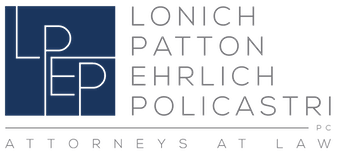Coercive Control: The Conceptual Origins and Subsequent Legal Applications
Defining Coercive Control
A. Conceptual Definition
Coercive Control has not been assigned one clear and specific definition. Rather, Coercive Control is often referred to as a range of tactics used by an abuser to establish power and control over their victim. These tactics extend beyond physical violence and often involve emotional, psychological, financial, and social abuse.
The aim of Coercive Control is to undermine the victim’s autonomy, independence, and self-esteem, leaving them feeling trapped and powerless. By manipulating and dominating every aspect of the victim’s life, the abuser ensures their ability to maintain control.
B. Legal Definition
Senate Bill 1141(SB 1411) is California’s “Coercive Control” bill. The bill incorporates “Coercive Control” into the definition of abuse under the Domestic Violence Prevention Act (DVPA).
The bill went into effect on Jan. 1, 2021. If a court finds that a party to a relationship has committed domestic violence via Coercive Control, the victim may file a restraining order against the abuser in family court. Violating the restraining order may carry criminal penalties.
The relevant statutory provision is California Family Code section 6320, which mirrors SB 1411 and states:
“(a) The court may issue an ex parte order enjoining a party from molesting, attacking, striking, stalking, threatening, sexually assaulting, battering, credibly impersonating as described in Section 528.5 of the Penal Code, falsely personating as described in Section 529 of the Penal Code, harassing, telephoning, including, but not limited to, making annoying telephone calls as described in Section 653m of the Penal Code, destroying personal property, contacting, either directly or indirectly, by mail or otherwise, coming within a specified distance of, or disturbing the peace of the other party, and, in the discretion of the court, on a showing of good cause, of other named family or household members.
(b) On a showing of good cause, the court may include in a protective order a grant to the petitioner of the exclusive care, possession, or control of any animal owned, possessed, leased, kept, or held by either the petitioner or the respondent or a minor child residing in the residence or household of either the petitioner or the respondent. The court may order the respondent to stay away from the animal and forbid the respondent from taking, transferring, encumbering, concealing, molesting, attacking, striking, threatening, harming, or otherwise disposing of the animal.
(c) As used in this subdivision (a), “disturbing the peace of the other party” refers to conduct that, based on the totality of the circumstances, destroys the mental or emotional calm of the other party. This conduct may be committed directly or indirectly, including through the use of a third party, and by any method or through any means including, but not limited to, telephone, online accounts, text messages, internet-connected devices, or other electronic technologies. This conduct includes, but is not limited to, coercive control, which is a pattern of behavior that in purpose or effect unreasonably interferes with a person’s free will and personal liberty. Examples of coercive control include, but are not limited to, unreasonably engaging in any of the following:
(1) Isolating the other party from friends, relatives, or other sources of support.
(2) Depriving the other party of basic necessities.
(3) Controlling, regulating, or monitoring the other party’s movements, communications, daily behavior, finances, economic resources, or access to services.
(4) Compelling the other party by force, threat of force, or intimidation, including threats based on actual or suspected immigration status, to engage in conduct from which the other party has a right to abstain or to abstain from conduct in which the other party has a right to engage.
(d) This section does not limit any remedies available under this act or any other provision of law.”
In short, the legal definition is “a pattern of behavior that in purpose or effect unreasonably interferes with a person’s free will and personal liberty.” (Fam. Code section 6320). This definition is vague and expansive. This gives broad discretion to the court in determining what specific acts constitute coercive control.
Coercive Control’s Origin
Evan Stark founded the theory of Coercive Control in his book, Coercive Control: How Men Entrap Women in Personal Life. Evan Stark’s theory of Coercive Control is a framework that focuses on understanding domestic violence and abuse beyond physical violence alone. Stark’s theory highlights the non-physical tactics employed by abusers to establish power and control over their victims.
According to Stark, Coercive Control operates through a series of tactics that progressively limit the autonomy and agency of the victim. These tactics often involve emotional abuse, psychological manipulation, economic control, social isolation, and monitoring of the victim’s activities. By undermining the victim’s self-esteem, independence, and support networks, the abuser ensures their dominance and makes it difficult for the victim to escape the abusive relationship.
Stark argues that physical violence is just one aspect of Coercive Control and often serves as a last resort when other tactics fail to maintain control. He emphasizes the importance of recognizing the broader pattern of behaviors that make up Coercive Control to better understand the dynamics of abusive relationships. This perspective challenges the traditional understanding of domestic violence, which predominantly focuses on isolated incidents of physical violence.
Stark’s theory of Coercive Control has had a significant impact on shaping policies and legal frameworks related to domestic violence. It has influenced the development of laws that recognize the cumulative impact of non-physical abuse and provide protection for victims in situations where physical violence may be absent or sporadic. By shedding light on the complex dynamics of coercive control, Stark’s theory has contributed to a more comprehensive understanding of domestic violence and has helped support efforts to address and prevent such abuse.
Components of Coercive Control
A. Emotional and Psychological Abuse
Emotional and psychological abuse are a central component of Coercive Control. The abuser constantly chips away at the victim’s self-worth, confidence, and mental well-being. The specific methods used to achieve this include constant criticism, humiliation, gaslighting, and manipulation. The victim ultimately loses their true sense of reality, further entrenching the power dynamic.
B. Isolation
Isolation is typically a significant component of Coercive Control. The abuser intentionally isolates the victim from friends, family, and support networks, making it challenging for them to escape the abusive relationship. The abuser will often times monitor the victims communication, and place restrictions on social interactions, leading to a profound sense of loneliness and vulnerability.
C. Financial Control
Financial dependence can be exploited by the abuser as a means of control. Typical tactics include restricting the victim’s access to money, withholding financial resources, or controlling all financial decision-making. In a situation where the victim is reliant on the abuser for every basic need, their feelings of entrapment intensify, and it can feel financially impossible to leave the abusive relationship.
D. Threats of Violence and Intimidation
Coercive Control can involve explicit or implicit threats of harm. The abuser may employ intimidation tactics to instill fear in the victim in hopes to gain their compliance. The constant threat of violence looming over the victim can make them feel trapped and submissive, unable to assert their own desires or needs.
Impacts on Victims
Recent studies claim that the consequences of Coercive Control on victims are profound and long-lasting. Victims experience a both mental and physical health issues, including anxiety, depression, post-traumatic stress disorder (PTSD), and self-esteem problems. The constant manipulation and gaslighting can make victims doubt their own sanity and perpetuate a cycle of self-blame. The isolation and control also makes it challenging for victims to reach out for support or escape the abusive relationship.
Social Response
Recognizing the complex nature of Coercive Control has led to changes in legal and social responses to acts of non-physical domestic violence. Several jurisdictions have introduced legislation that criminalizes Coercive Control, emphasizing the importance of addressing each and every form of domestic abuse.
A recent surge in social awareness campaigns have aimed to educate the public, professionals, and even victims about the signs of Coercive Control and how to seek support. However, acknowledging the danger(s) of Coercive Control is a far easier task than implementing the concept into the penal code. The fight against Coercive Control has only just begun.
Legal Response
McCord v. Smith (2020) Cal.App.5th 358, held that coercive and controlling behavior is a form of domestic violence under California’s restraining order laws. (McCord v. Smith (2020) Cal.App.5th 358).
In McCord, the court stated that isolated events need to be evaluated within the broader context of the relationship to properly assess the “totality of the circumstances” for the purpose of issuing a restraining order. Id.
In September 2020, Governor Gavin Newsom signed a bill to amend the Domestic Violence Prevention Act to ensure that Coercive Control constituted domestic violence. (SB 1141).
Fam. Code section 6300 provides the purpose of the Domestic Violence Prevention Act. (Fam. Code section 6300). An order may be issued under this part, with or without notice, to restrain any person for the purpose specified in section 6220, if an affidavit or testimony and any additional information provided to the court pursuant to section 6306 shows, to the satisfaction of the court, reasonable proof of a past act or acts of abuse (Fam. Code section 6300).
Prediction
The legal definition of “Coercive Control” is objectively vague. The California statute is constructed to encompass a variety of behaviors and provides minimal guidance to presiding judges. This, in turn, gives wide discretion to judges on how the code section may apply.
The glaring issue with section 6320 is that practically anything could fall under the term “Coercive Control.” The actions defined by Stark and other scholars are typically non-physical actions. Yet, there is no concrete definition or point in time where an action constitutes Coercive Control. These non-physical actions are highly subjective and can even include minor instances of getting into various forms of arguments.
Further, even the father of Coercive Control, Evan Stark, has no explanation as to the specific point in time where actions start to constitute Coercive Control. There is no upper or lower boundary, leaving experts to make a subjective case-by-case determinations on what is and what isn’t Coercive Control. The concept’s vague nature is extremely problematic when the Coercive Control “experts” are being paid for by a single party to a lawsuit. The experts can essentially fabricate a line of reasoning in order to appease the party that is paying them to appear. Thus, the aforementioned “experts” are manipulating the courts into establishing case precedent that is based on self-interest, rather than fact.
Appeals will be virtually impossible to win because the only way to obtain a reversal will be via a procedural defect in the standard of review or court proceedings. I believe that appellate courts will have a difficult task in determining that the trial court abused its discretion with such subjective and arbitrary guidelines. Thus, trial court judges who initially preside over Coercive Control cases are provided immeasurable power in the determination of how the concept will be applied for decades to come.
The variance in the application of section 6320 will be a large defect in California’s judicial system. However, California’s implementation can serve as a test case for other states and judiciaries. Other legal jurisdictions will benefit from the year(s) of hindsight if/when they choose to implement Coercive Control into their legal code.
The notion that arguments between spouses can be categorized as a form of domestic violence is so far removed from life’s realities that one must question if the concept can be taken seriously. The non-existent outer limits of Coercive Control’s application greatly diminish the validity of the concept and the legitimacy of its application.
Ultimately, I believe that Fam. Code section 6320 will be unevenly applied for several years until there is a clear and convincing body of case law for ultra-specific situations/behaviors. There will be little to no uniformity, and each case will present an opportunity to shape how the code section functions. Only time will tell if said case precedent is reasonable and prudent.
Conclusion
Coercive Control represents a foundational shift in our understanding of domestic violence. Many years will pass until we have a clear and concise understanding of how the code section will be applied to various behaviors. However, the implementation of Coercive Control in domestic violence proceedings will ultimately be a step in the right direction in the fight against domestic violence.
The courts will have to recognize the complex interplay of psychological, emotional, financial, and social elements to better comprehend the lasting impact on victims. Future case precedent will provide a more comprehensive definition of Coercive Control, hopefully deterring the behavior it currently seeks to prevent.




